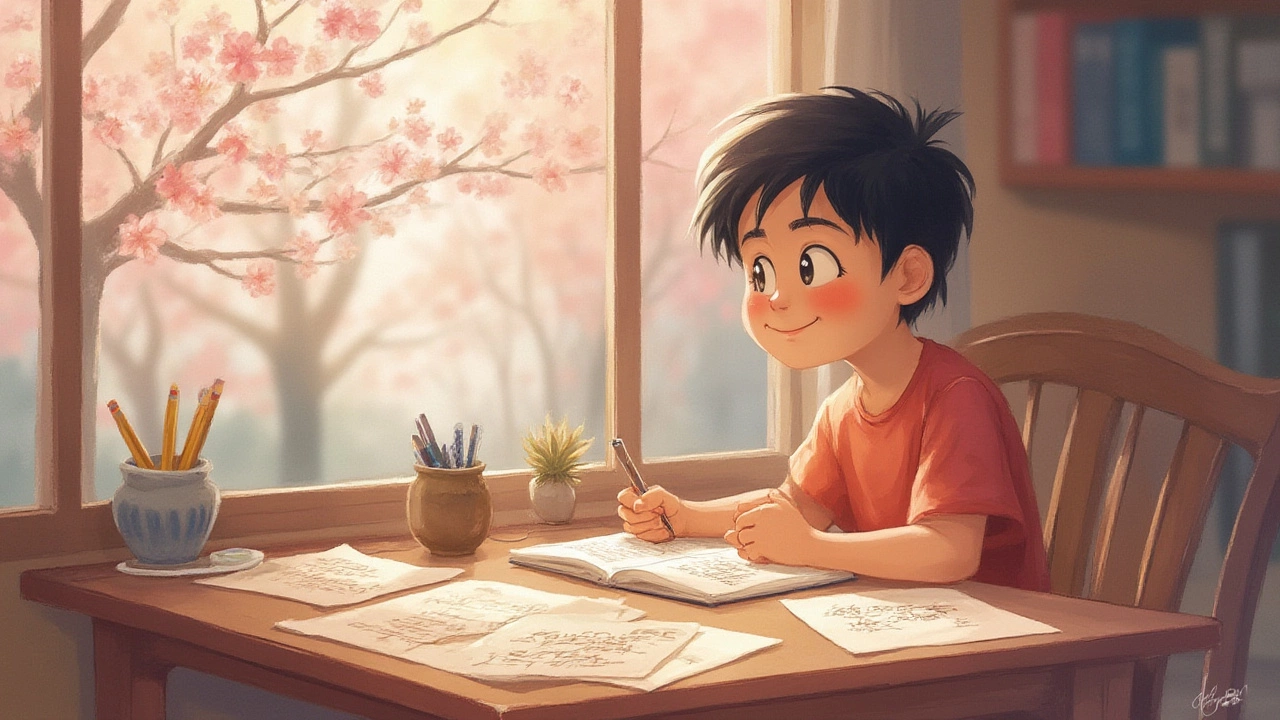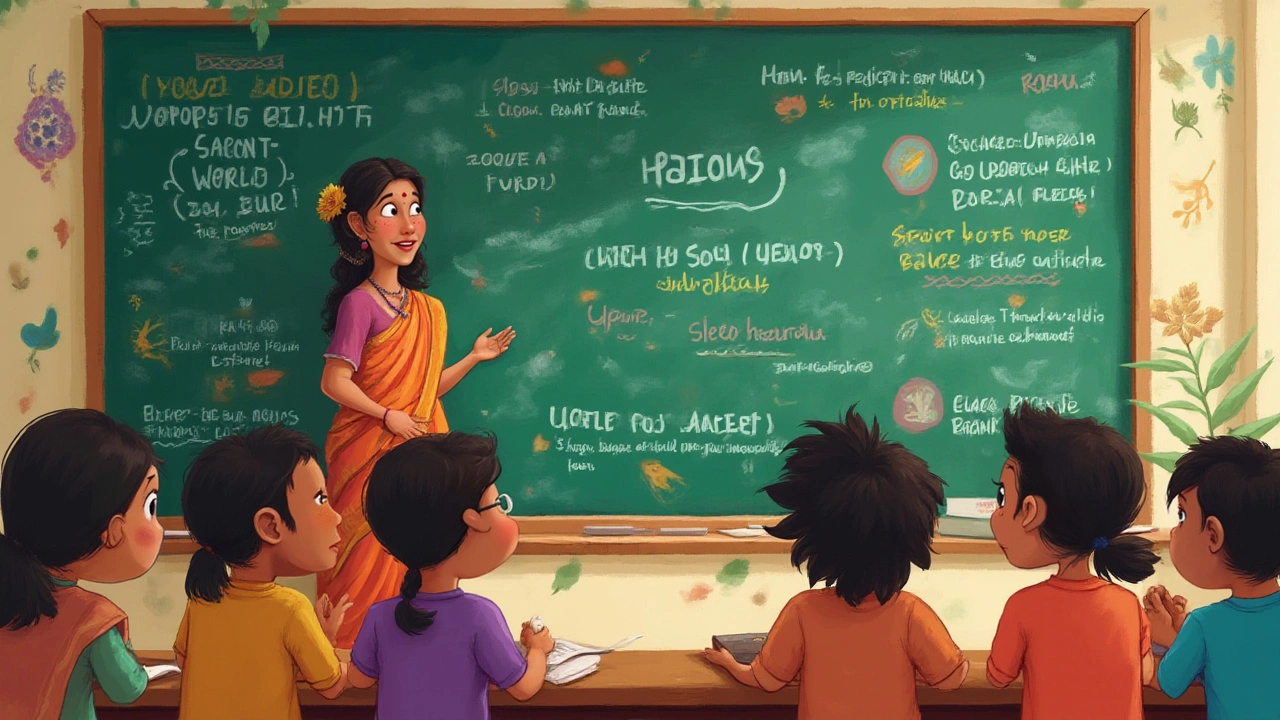
Three lines. That’s all you get to paint a feeling, whisper a memory, or capture a whole storm of ideas. Sounds simple, right? But don’t be fooled—there’s something almost magical about packing raw emotion or vivid imagery into such a tiny frame. Some of the most famous lines in history are only three lines long, and whether you know it or not, you’ve probably heard or read a few. It’s not just about quick expression; it’s about picking the exact words that say the most with the least. And that’s both the challenge and the thrill of 3 line poetry.
What’s the Official Name for 3 Line Poetry?
If you asked a room full of poetry lovers, “What do you call a poem with three lines?” you’d likely hear more than one answer. The most common word is "tercet." Yep, fancy-sounding, but it's all it means—a group or verse of three lines, whether it stands alone or pops up within a bigger poem. Think of it like poetry’s three-piece puzzle. But wait, there’s more. The haiku is maybe the star of all three-line forms, known for its simple structure and its roots in Japanese tradition. Then you have triplets, where the three lines usually rhyme with each other, and the much rarer forms like the Sicilian tercet or the enclosed tercet, which juggle rhyme schemes and rhythm patterns like a circus act.
Quick fact: tercet comes from the Italian word “terzetto,” meaning “little third.” This term’s been around for centuries and isn’t just limited to English poetry—French, Italian, and even Persian poets have played with triples for ages. All these different flavors of three-line poetry are bound by one rule: three lines, endless possibilities. The mood can shift from playful to punchy to deeply mournful, depending on how those lines dance together. You’ll see tercets as stand-alone poems, or sneaking inside longer works to break up the flow. If you've ever stumbled on Dante’s “The Divine Comedy,” you’ve seen terza rima, a string of interlocking tercets that ripple through the whole epic.
The Haiku: Minimalism in Motion
Haikus are the most famous ambassadors of the three-line family. Born in Japan centuries ago, the classic haiku is all about strict rules and, surprisingly, a lot of freedom within those limits. Here’s the basic recipe: three lines, and a pattern of syllables—5 in the first line, 7 in the second, and 5 in the last. Doesn’t sound like much to work with, but wait until you read one that makes you rethink your whole day. Traditionally, haikus focus on nature—think frogs leaping, cherry blossoms falling, lightning cracking open the night—but modern haikus cover everything from heartbreak to city life to the sound your phone makes in the morning.
One famous haiku by Matsuo Bashō:
“An old silent pond
A frog jumps into the pond—
Splash! Silence again.”
The poem paints a scene in exactly 17 syllables. There’s a moment, an action, and then—almost nothing, but that nothing is where your mind starts to wander. Bashō isn’t telling you how to feel, he’s inviting you to step quietly into the scene.
Curious to write your own? Start by picking a brief image or feeling. Focus on the present moment: a cloud drifting, sunlight on tile, a kettle’s whistle. Count your syllables with your fingers, and don’t fuss about rhyming. Haiku is about clarity, not cleverness; about suggestion, not statement. And if you accidentally stray from the syllable count, don’t sweat it—many English-language poets stretch the rules, since Japanese and English aren’t a perfect match syllable for syllable.

Beyond Haiku: Other Three-Line Forms (Tercet, Triplet and More)
So, haiku hogs the spotlight, but have you met its cousins? The tercet is any three-line stanza, with unlimited themes and styles. If the lines rhyme—say, AAA or ABA—that’s a triplet. Look up Percy Bysshe Shelley’s "Ode to the West Wind," and you’ll notice it’s full of rolling tercets. Sometimes poets use tercets in a series: enter the terza rima, where the middle line of one tercet rhymes with the outer lines of the next. It keeps a poem twisting and turning, perfect for legends or epic stories. Even Dante used terza rima all the way back in medieval Italy, and plenty of modern poets copy his deft technique.
Want something punchier? The senryu is haiku’s mischievous twin, shaped the same (three lines, usually 17 syllables) but it pokes fun at people instead of marveling at nature. Limericks have three-line frames tucked inside them too—they just come attached to the rest of the five-line package, known for their bounce and humor. The world of three-line poetry is way more diverse than most folks expect, with dozens of cultures inventing their own riffs on this simple form. Spanish, Urdu, and Chinese poets all play with threes, bending the rules to fit their sound and language.
Try a three-line poem without any rhyme, and you’ll feel the difference. The lines might clash, run wild, or barely hold together, and yet sometimes that’s what makes them memorable. Experiment with repetition, enjambment (running a thought across more than one line), and wild images. Notice how a short poem can sometimes hit harder than a ten-page epic.
Why Do Three-Line Poems Pack Such a Punch?
Sometimes, less really is more. Three lines can slip under your guard, stealing attention in ways a long poem just can’t. Ever noticed how song lyrics or ad catchphrases stick with you if they’re short and snappy? Three-line poetry has the same pull. You remember it, recite it, maybe even tap it out on your phone late at night. It feels doable. There’s no need to wrestle the blank page for hours—just untangle three lines’ worth of emotion, and you’re done.
Science actually backs this up. Researchers at University College London once found that our brains remember short, symmetrical patterns—like trio lines—way better than random, sprawling paragraphs. The three-line format challenges both the writer and the reader: the writer has to trim all the fat, and the reader gets left with only the core idea. It’s a form that’s perfect for the digital age, too. Instagram poets, tweet-length scribes, and texting wordsmiths all love three-line poetry for its shareability and speed. You don’t just read it—you pause, roll it around, sometimes even reread it out loud to feel how it lands. The impact can be sharp or soothing, silly or serious.
But it’s not always easy. The hardest part of three-line poetry is editing. Every single word counts. If you can swap a five-syllable word for a three, you do it. If a line drags or repeats, you chop it ruthlessly. Some poets draft a dozen trios before they find the one that sparks. Best advice? Read as many three-line poems as you can—old ones, new ones, funny and sad—and let their rhythms teach your fingers to find their own path.

Tips to Write a Killer Three-Line Poem
So now you’re itching to try your hand? Good news—there’s no poetry police. Anyone can write a three-line poem. Whether you want to stick to the strict rules of a haiku, let tercets tumble without rhyme, or play with triplets, you only need a few things: observation, patience, and a willingness to take risks.
- Start with a clear image: Pick a detail that stands out, even something common, like steam on a mirror or the sound of rain against a window. Begin with what’s real in front of you.
- Count syllables out loud: For haiku, it’s 5-7-5, but you can ignore this for other forms. Try different rhythms and see how the lines feel read aloud.
- Chase a mood, not a message: Don’t explain everything. Suggest a feeling, an unfinished thought, a quick joke, or a sudden memory. Let the reader fill in the blanks.
- Use strong verbs and clear nouns: Tiny poems need strong bones. Ditch fluffy adjectives, tighten up verbs, and cut extra words. If you can make a line sharper, do it.
- Break the rules—sometimes: If you get stuck, try reversing the order, ending on a question, or using repetition.
Want to level up? Study Bashō, but also read Jack Kerouac’s “American haikus”—looser linguistically, more jazz than classical. Try reading your poem to a friend—if they look confused, rewrite it. If they say “Wow,” you’ve nailed it. There are online forums, printed anthologies, or even poetry slam nights where you can share and swap three-line poems for instant feedback.
And remember: some of the most moving poetry fits on a Post-it note. Three lines can spark a laugh, a sigh, or that long, silent moment before the next thought forms. If you want to say something short and sharp, three lines is one of the oldest—yet most stylish—tools you’ll ever use. Why not try one today?